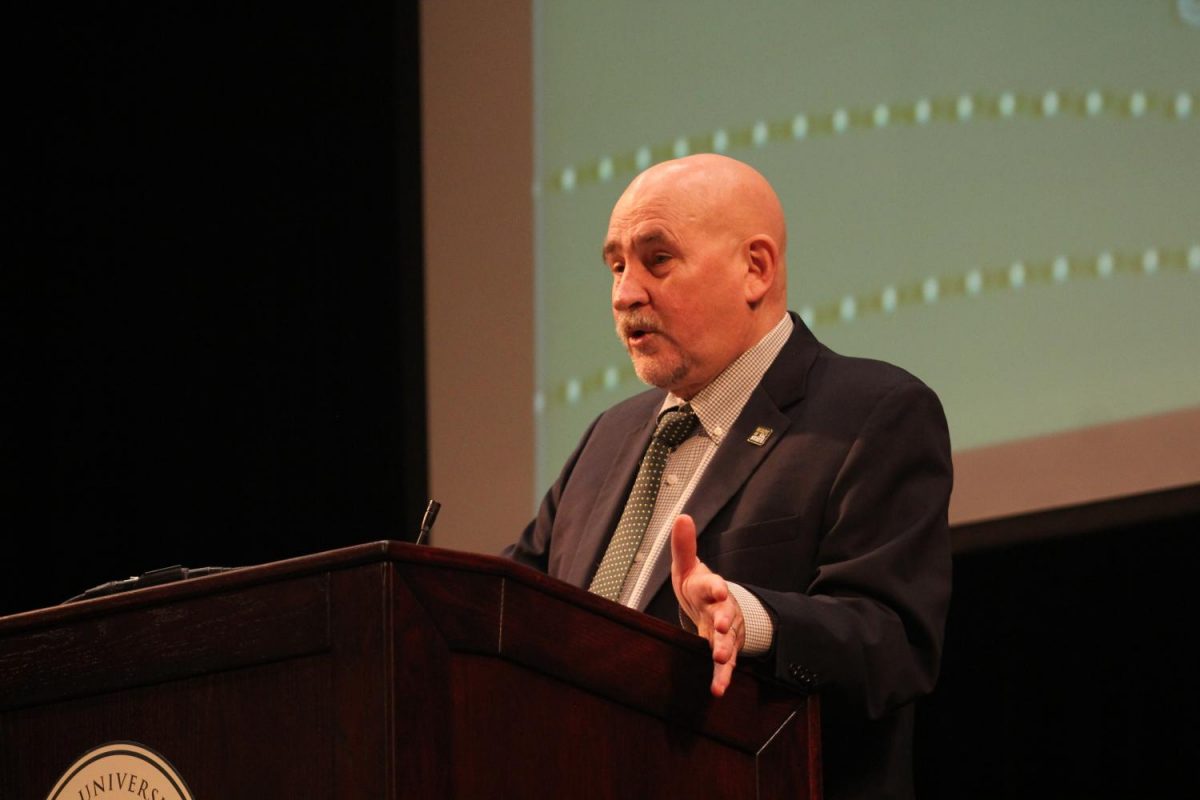EDITORIAL: Finish in Four grade? Incomplete
Joseph Daniels – The State Hornet
Sac State President Robert Nelsen speaks at the Fall Address in August 2017. Nelsen announced in a SacSend that his Spring 2019 address will be replaced with an event to honor Stephon Clark.
September 27, 2017
In his fall 2017 address on Aug. 24, Sacramento State President Robert Nelsen said that the “Finish in Four” initiative is positively affecting the university’s graduation rate after just one year in effect.
This claim sounds more like an exaggeration by Sac State officials to save face, as the school’s graduation rates remain low compared to other California State University campuses.
Since the program was introduced in fall 2016 and has only been in effect for one full school year, how does Nelsen know that it’s already a success?
As The State Hornet reported at the address, the graduation rates for four-year, six-year and transfer students have all improved.
According to Executive Director of University Initiatives and Student Success Jim Dragna, during that first year a total of 64 percent of freshmen signed the pledge to take at least 15 units per semester to be on track to reach the 120 unit threshold to graduate, while 84 percent signed this fall.
The university also offers incentives like discounts on summer classes and campus products, as well as more academic advising sessions to attract more freshmen and transfer students to sign the pledge.
On top of that, a total of six new academic advisors were hired in addition to 89 new faculty members, and more than 12,000 added seats in 658 new course sections throughout all departments were added to help accommodate the program’s students.
Dragna said “the plan is working” and the university is reaching that CSU-wide Graduation Initiative 2025 objective as there was a 12.5 percent increase from 51.6 percent to 64.1 percent of freshmen enrolling in more than 15 units during their first semester.
These numbers, although promising, lack the element of time. Declaring a graduation plan that bears the name “Finish in Four” is progressing successfully after just one year only further confuses students.
Instead, the university should wait until the fall 2020 semester — Finish in Four’s first four-year cycle — to determine the program’s effectiveness.
Dragna said the university is being more proactive by constantly updating data of how many students, including the 2,347 freshmen who committed to taking at least 30 units during the 2016-17 school year, are on track for their second year. Being proactive is applaudable, but being premature isn’t.
The fact is, only 50 percent of the total freshmen enrolled completed 15 units for fall 2016; only a 10 percent increase in the number of those who are progressing into their second year this fall.
Improving? Yes. Successful? Too soon to tell.
It is clear; the longer you stay, the more you pay. Though Sac State has a cheaper bill than most universities, the attention to schoolwork needed to take fifteen or more units every semester can be prohibitive to students attending while they work on the side to support themselves.
Students should be rewarded with things like priority registration and discounted summer classes for academic success regardless of unit load. Then, Sac State can truly help students graduate on their time.
































































































































